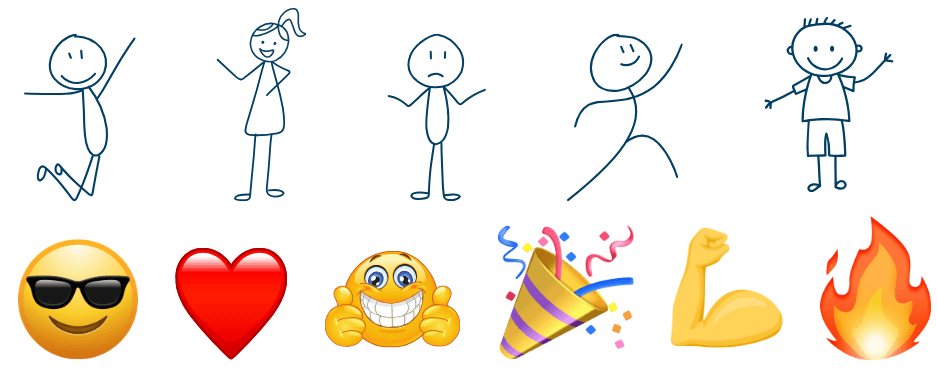3 New Drawing techniques I’ve been trying - and one I am giving up!
Introduction

They say you can’t teach an old dog new tricks—but what if the dog is determined?
Over the last few months, I’ve been experimenting with different drawing techniques to improve my hand-drawn Mind Mapping skills. And let me tell you—some have been game-changers, while others… not so much.
I started this experiment because I felt my Mind Maps were starting to look the same. I wanted to shake things up, make them more visually engaging, and push my creative boundaries.
So, in this post, I’m sharing:
✅ Three new drawing techniques I’ve been trying (and why they might work for you).
❌ One method I’m officially giving up—despite its popularity!
Can you guess which one didn’t make the cut? Keep reading to find out!
Why Trying New Drawing Techniques Matters

You might think that once you’ve mastered the basics of Mind Mapping, there’s no need to keep experimenting with different drawing styles.
But here’s what I’ve discovered:
🎨 Your maps can start looking repetitive—which can make them less inspiring to use.
🧠 Your brain thrives on novelty. When you change the way you create, you stimulate new ideas and connections.
⚡ Adding visual elements helps with memory retention—the more engaging your Mind Map, the easier it is to recall the information later.
So if you’re feeling stuck in a creative rut, trying new techniques might be just the thing you need.
Let’s dive into the ones I’ve been experimenting with!
1️⃣ New Drawing Technique: The Minimalist Line Sketch

I used to think that Mind Maps had to be bursting with colour, symbols, and complex illustrations to be effective. But then I tried a minimalist line sketch approach—and I’m hooked!
Why It Works:
✔️ Faster to create—perfect for when you need a quick idea dump.
✔️ Keeps your focus on the content instead of getting lost in decorative details.
✔️ Looks clean and professional—ideal for business or client-facing presentations.
How to Try It:
Stick to black ink and a single pen thickness.
Use quick, simple line drawings instead of detailed illustrations.
Focus on clarity and spacing—make sure branches and keywords are easy to read.
🚀 Verdict: A WIN! I’ll definitely be using this technique when I need clarity and speed over artistic complexity.
2️⃣ New Drawing Technique: The Shadow & Depth Effect

I’ve always admired Mind Maps that look like they “pop” off the page, but I never put much effort into adding depth—until now!
Why It Works:
✔️ Gives your Mind Maps a 3D effect, making them visually engaging.
✔️ Helps differentiate key ideas from supporting details.
✔️ Adds a sense of structure and organisation without overcrowding the map.
How to Try It:
Use light grey shading under main branches to create depth.
Apply a subtle drop shadow effect to keywords and key images.
Experiment with different pen pressures to create variations in line thickness.
🚀 Verdict: A WIN! This technique makes my maps look more dynamic and eye-catching—I’ll definitely be using it more!
3️⃣ New Drawing Technique: The Watercolour Splash Background

I love adding colour to my Mind Maps, but I wanted a technique that felt more organic and artistic—so I experimented with a watercolour splash effect.
Why It Works:
✔️ Creates a vibrant, artistic backdrop without overwhelming the content.
✔️ Enhances visual memory—your brain associates different colours with different ideas.
✔️ Turns your Mind Map into a visually stunning piece of work.
How to Try It:
Lightly wash watercolour paint (or digital watercolour brushes) across the page before drawing.
Use complementary colours for different branches to create a colour-coded system.
Keep the Mind Map itself minimal so the colours don’t distract from the content.
🚀 Verdict: A WIN! This technique is great for personal and creative Mind Maps, but I’d keep it subtle for business settings.
🚫 The One Drawing Technique I’m Giving Up: Overly Detailed, Hyper-Realistic Sketches

I know, I know—some people create jaw-dropping, realistic sketches in their Mind Maps. But for me? It’s just not worth the effort.
Why I’m Ditching It:
❌ Takes way too long. When I’m trying to capture ideas quickly, spending 20 minutes shading a tree branch is… not ideal.
❌ Distracts from the actual content. Mind Maps are about organising thoughts, not making a masterpiece.
❌ Too easy to get perfectionist about it. I found myself reworking drawings instead of focusing on my ideas.
💡 What I’m Doing Instead:
Simplifying my sketches—quick doodles, icons, and symbols work just as well.
Using expressive lines instead of hyper-detail.
Remembering that Mind Mapping is about THINKING first, art second.
🚀 Verdict: A FAIL. I’m happy to leave the fine art sketches for a different hobby!
Key Takeaways: Experimenting with Mind Map Drawing Techniques

Here’s what I learned from this experiment:
✔️ Minimalist line sketches are great for quick, clear maps.
✔️ Shadow & depth effects make Mind Maps more visually engaging.
✔️ Watercolour backgrounds add creativity and vibrancy.
❌ Hyper-realistic sketches take too long and don’t add enough value.
The best way to improve your Mind Mapping skills is to experiment, adapt, and find what works best for you.
🎨 What about you? Have you tried any new drawing
techniques in your Mind Maps? Let me know in the comments!
🎯 What’s Next? Join The Million Mind Map Project for FREE!
Want to master Mind Mapping with expert techniques and training?
🎉 Join The Million MindMap Newsletter today to learn more ways to enhance your Mind Maps and be the first to hear all the latest from Mind Map Expert HQ.
🔽 Click below to sign up today! 🔽

Categories

THE PROJECT
(2)

MIND MAPPING
(2)

JOIN IN
(2)

Latest Posts

About me

Hi there 👋 My name is Elaine Colliar, 5 Times World Mind Mapping Champion and your Mentor in Mind Mapping!

Ready to Think Smarter? Join Our Free Mind Mapping Community!
Learn directly from TWO World Champions in Mind Mapping, get exclusive resources, and connect with like-minded thinkers who are transforming their productivity, careers, and creativity.

Get Smarter, One Weekly Idea at a Time
We simplify all our Mind Mapping news for you. Get the week's best insights, tips and news—all curated and delivered in one weekly digest. Organise your thinking, unlock creativity, and achieve more with less effort.



